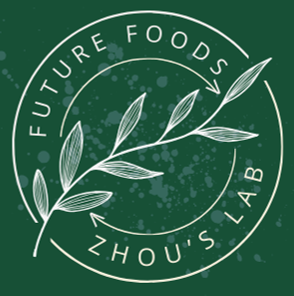Food nanoparticles for enhanced the bioavailability of bioactive compounds (2020-2023)
Introduction
Many bioactive compounds (such as vitamins, $\beta$-carotene, and polyphenols) are beneficial to us, regarded as antioxidants, and used to clean free radicals. However, they normally have low bioavailability, because of their poor solubility, crystallization, and chemical stability, which leads to a large space to be improved for the development of bioactives-based functional foods. There is still a need to increase their loading/encapsulating efficiency, gastrointestinal stability, and bioavailability.
At present, using advanced nanocarriers is regarded as an effective way to increase their oral bioavailability. It has many benefits to use nanocarriers to deliver lipophilic bioactives (LBs). First, these bioactives can be dissolved and encapsualted into the hydrophobic phase of nanocarrier, which can significantly increase the water-solubility of LBs and avoid the potential crystallizations. Besides, the nanocarriers are kinetically stable, and thus increase the stability of LBs in solutions. The nanoemulsion is one of common food-grade nanocarriers, where the emulsifiers can reduce the interfacial free energy of O/W phases. It has been reported that it effectively increases the water-solubility, gastrointestinal stability and adsorption of LBs. A structural design approach to optimize these delivery systems, where we can optimize different oil phases, emulsifier types, and structural properties of emulsions, by maximizing their encapsulating and delivery efficiency.
- Optimization of delivery systems
Many factors could be expected to impact the oral bioavailability of the LBs in the delivery systems, including 1) emulsifier type: some emulsifiers could be altered by the pH and tend to aggregate. They could be also digested by the digestive enzymes, for example, nanochitin and nanocellulose. It means that the lipids trapped in these aggregates could be hardly digested into the mixed micelles, and thus decreases the oral bioavailability of LBs. 2) lipid type: the large LB could be hardly solubilized in the short, even median-chain lipids. For example, the long-chain $\beta$-carotene cannot be effectively solubilized in the coconut oil, which usually needs a long-chain lipids, such as some vegetable oils. 3) droplet size: digesting the large size of droplets takes longer time and enzymes, so they could not be digested completely, while the small size of droplets can be digested within a short time, and most of them can be formed to mixed micelles used to solubilize the LBs.
Reference
Zhou, H.; Dai, T.; Liu, J.; Tan, Y.; Bai, L.; Rojas, O. J.; McClements, D. J. Chitin nanocrystals reduce lipid digestion and β-carotene bioaccessibility: An in-vitro INFOGEST gastrointestinal study. Food Hydrocolloids 2021, 113, 106494. DOI: https://doi.org/10.1016/j.foodhyd.2020.106494.
Zhou, H.; Zheng, B.; McClements, D. J. Encapsulation of lipophilic polyphenols in plant-based nanoemulsions: Impact of carrier oil on lipid digestion and curcumin, resveratrol and quercetin bioaccessibility. Food & Function 2021, 12 (8), 3420-3432. DOI: https://doi.org/10.1039/D1FO00275A.
Tan, Y.; Zhang, Z.; Zhou, H.; Xiao, H.; McClements, D. J. Factors impacting lipid digestion and β-carotene bioaccessibility assessed by standardized gastrointestinal model (INFOGEST): Oil droplet concentration. Food & Function 2020, 11 (8), 7126-7137. DOI: http://dx.doi.org/10.1039/D0FO01506G.
Tan, Y.; Zhou, H.; Zhang, Z.; McClements, D. J. Bioaccessibility of oil-soluble vitamins (A, D, E) in plant-based emulsions: Impact of oil droplet size. Food & Function 2021, 12 (9), 3883-3897. DOI: http://dx.doi.org/10.1039/D1FO00347J.
